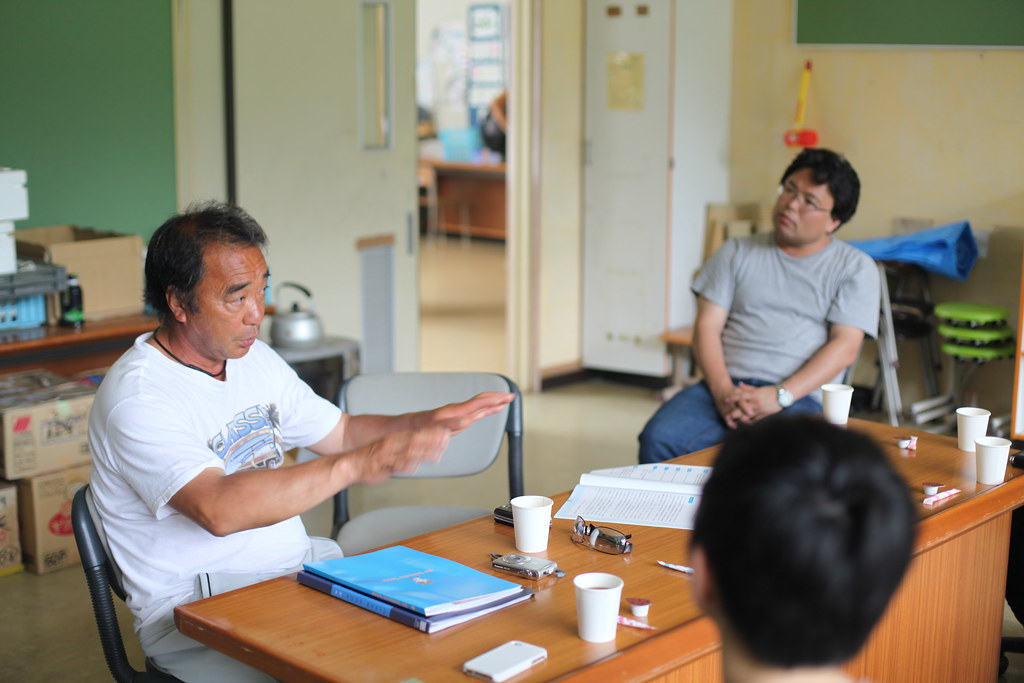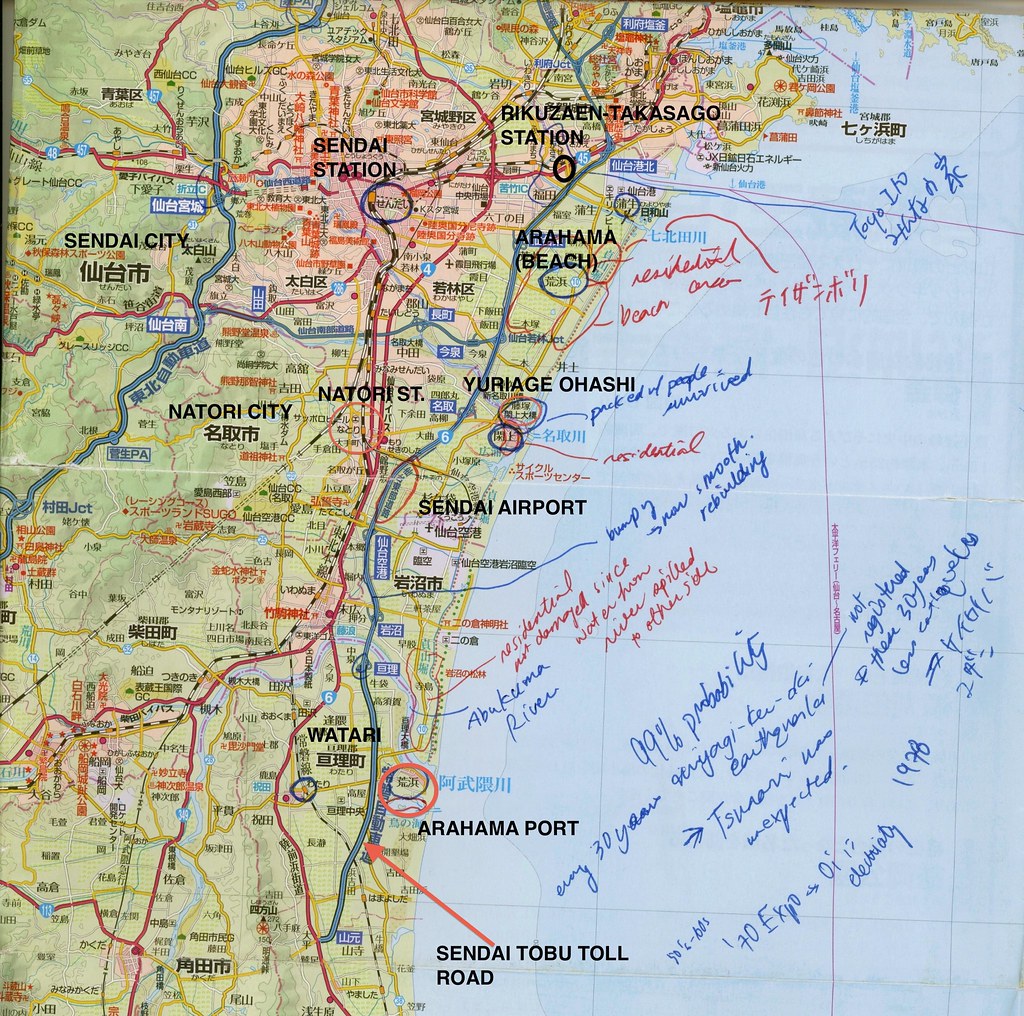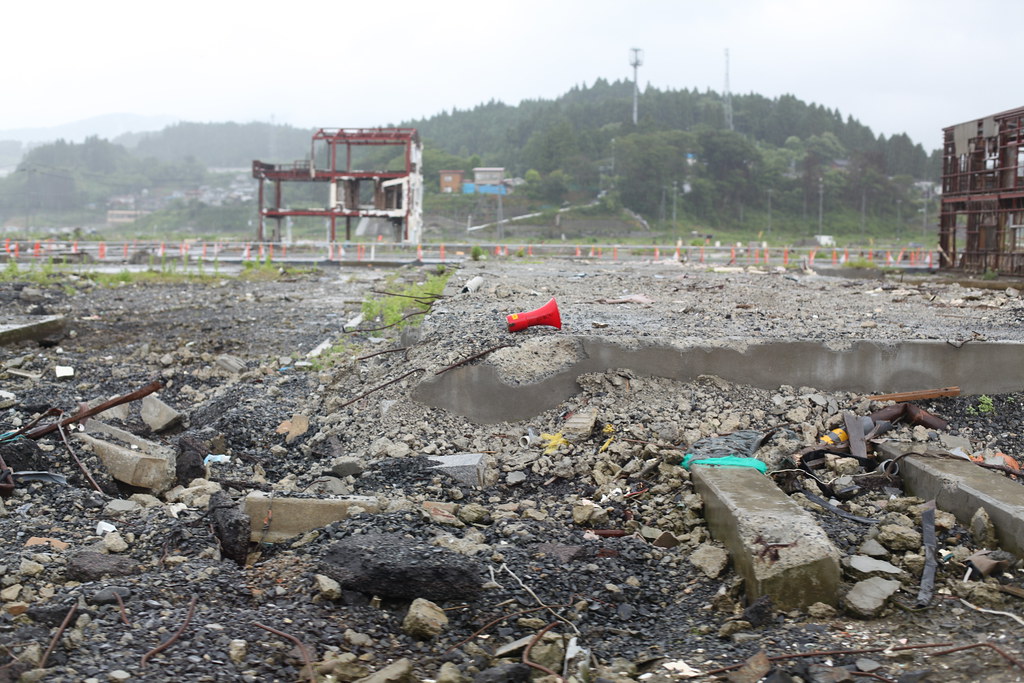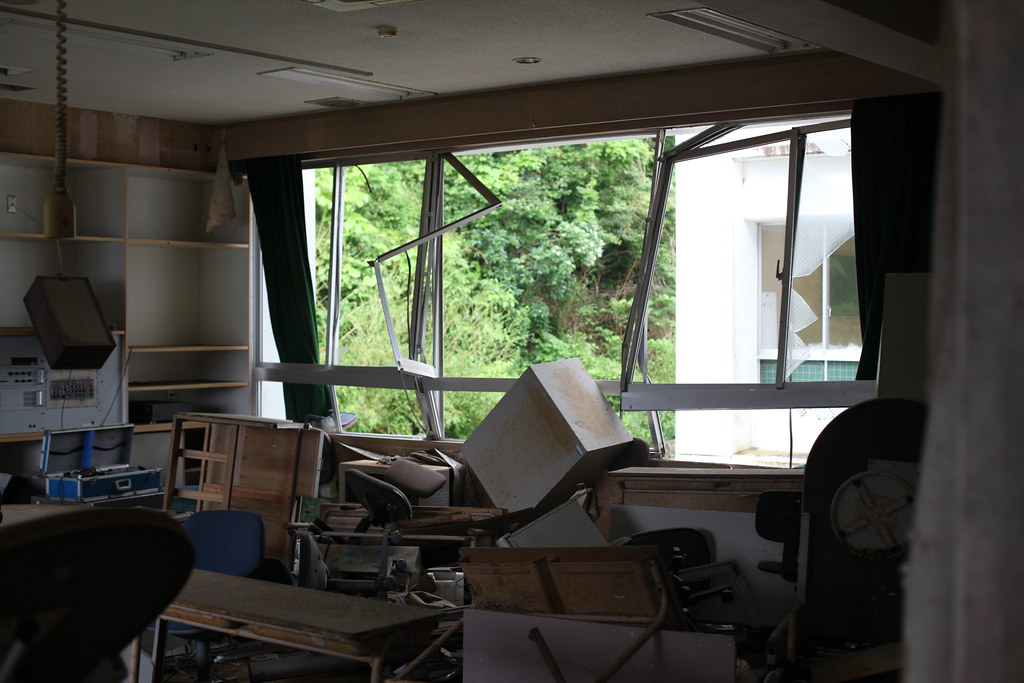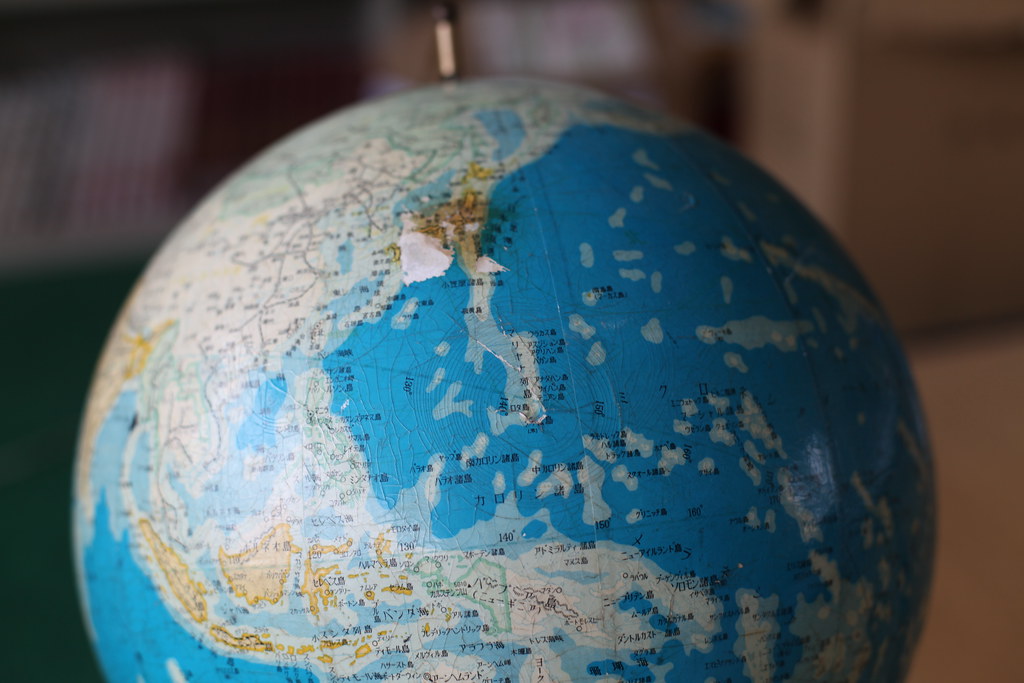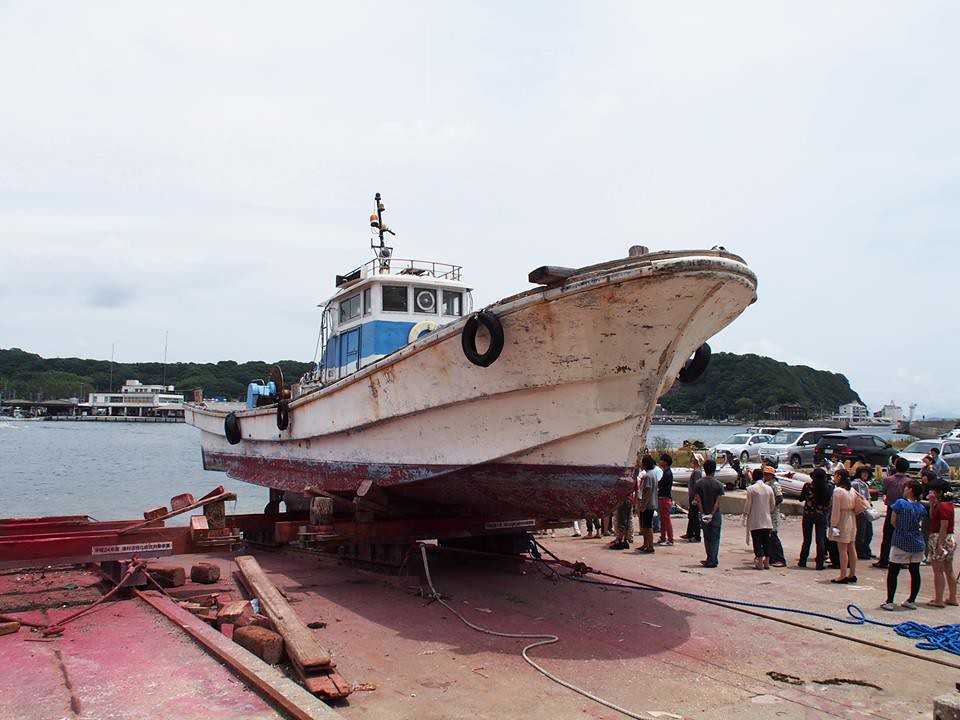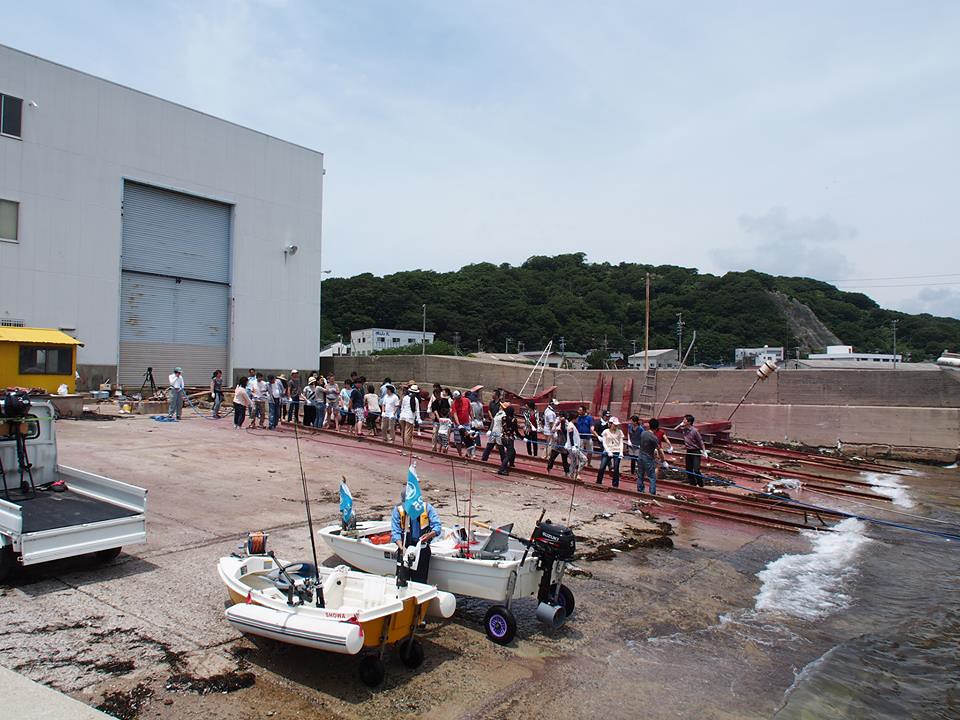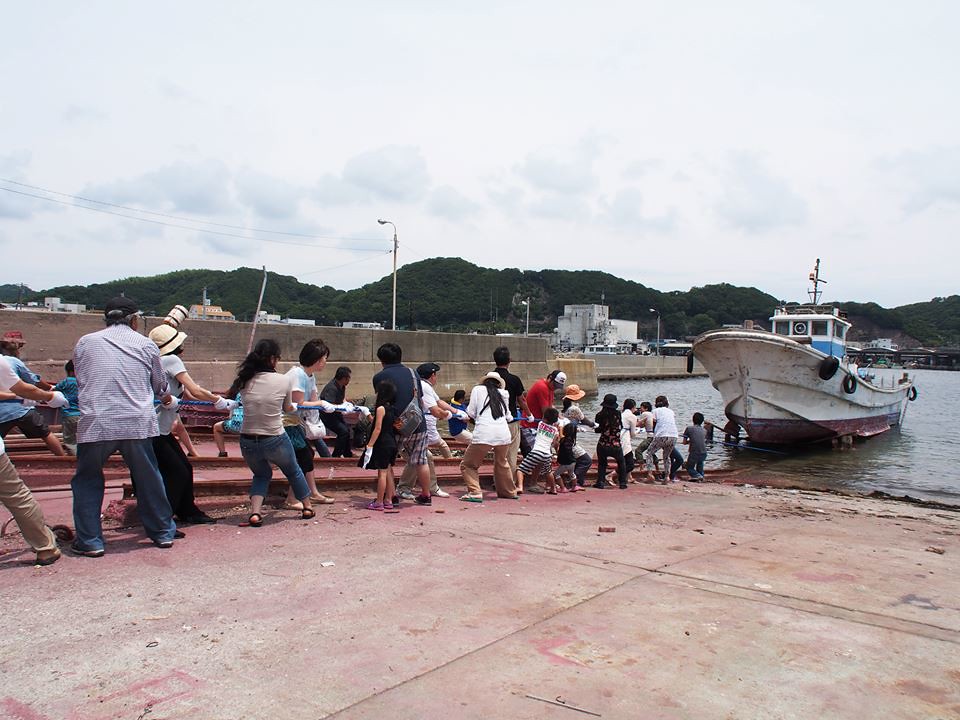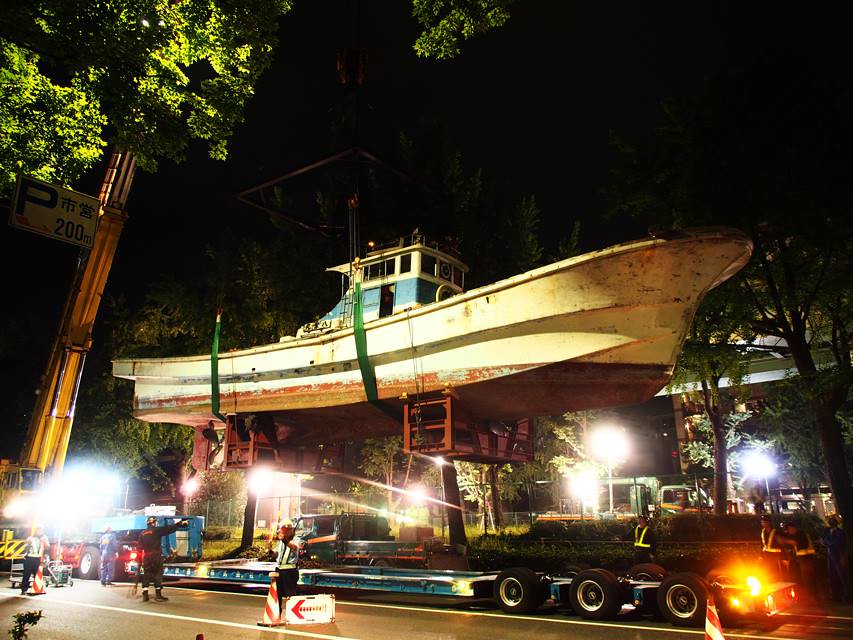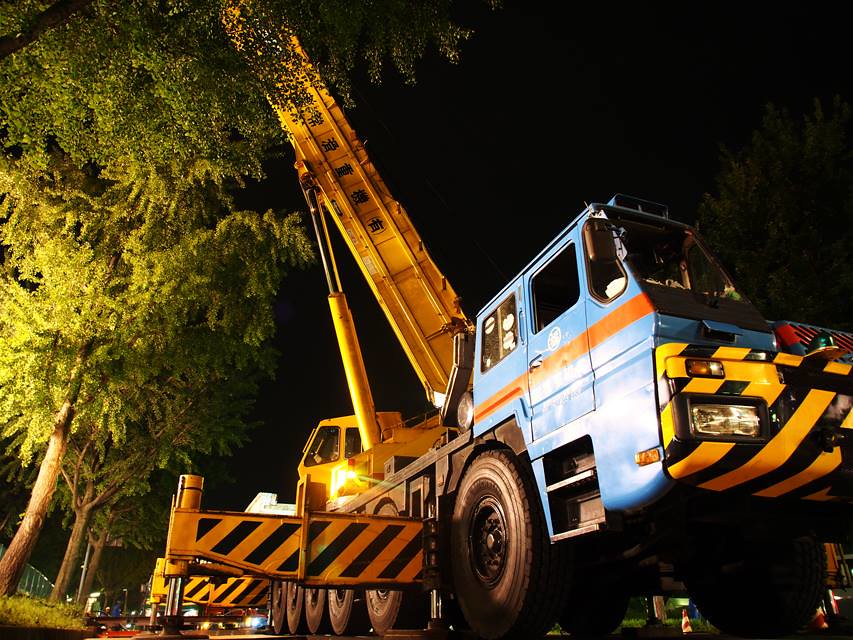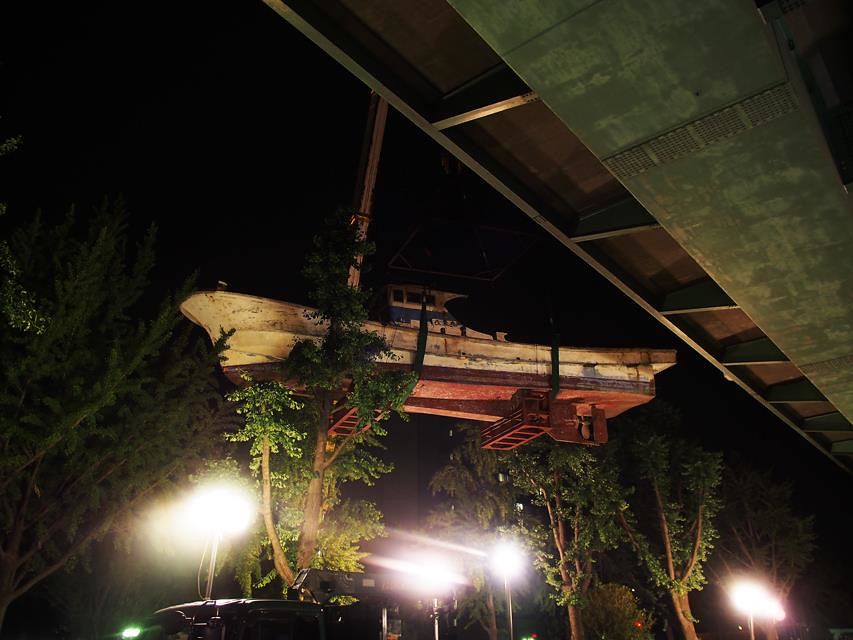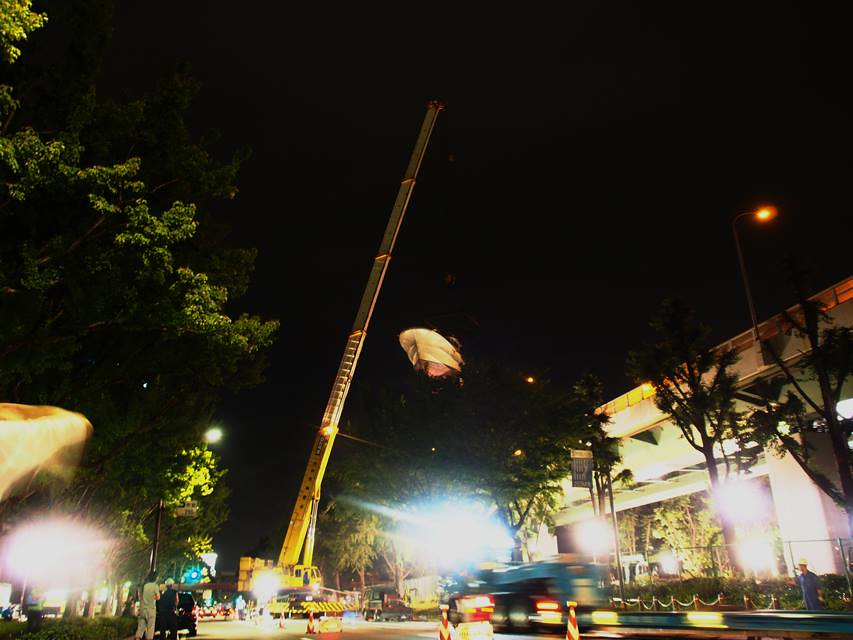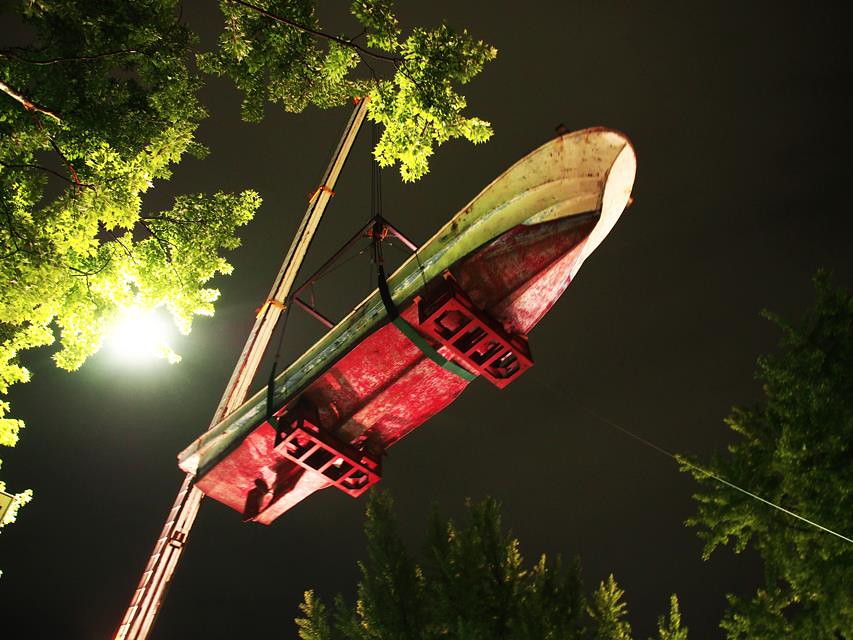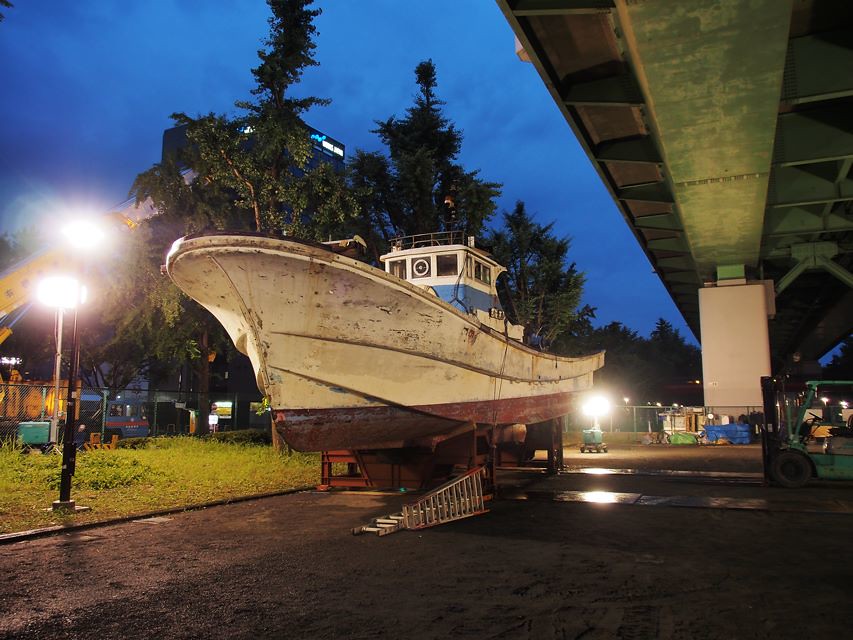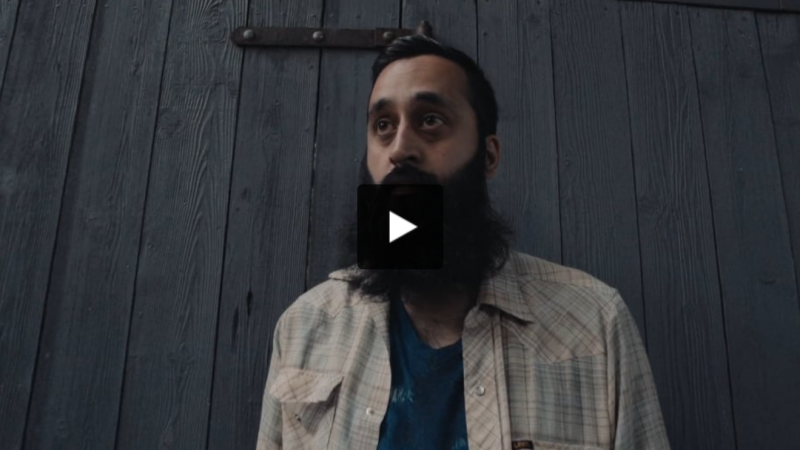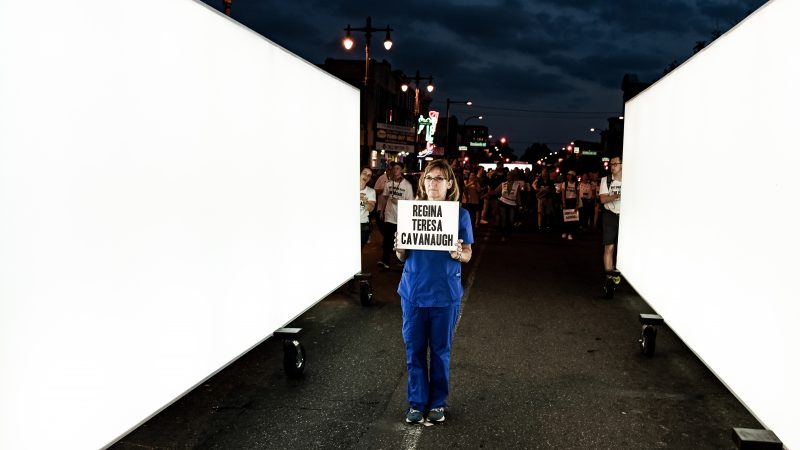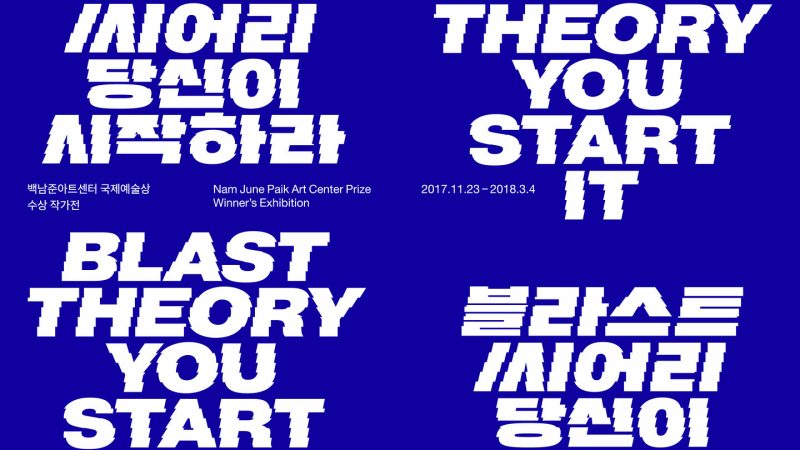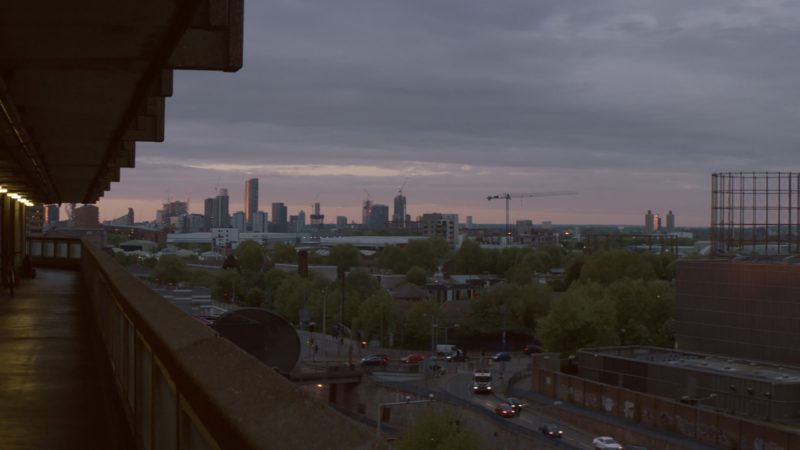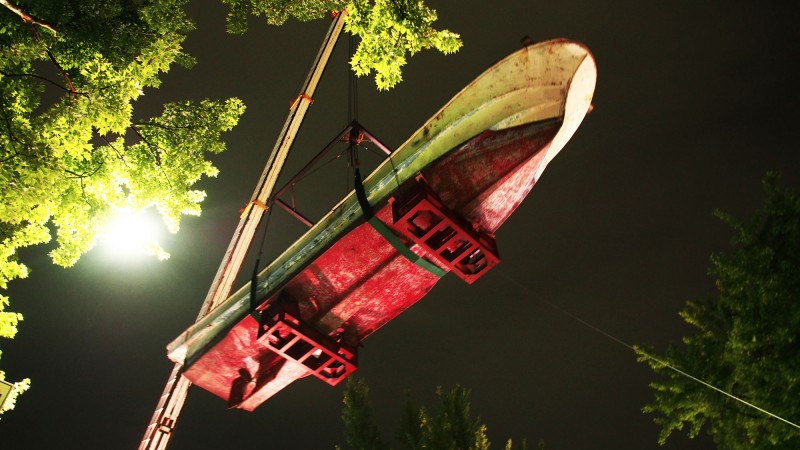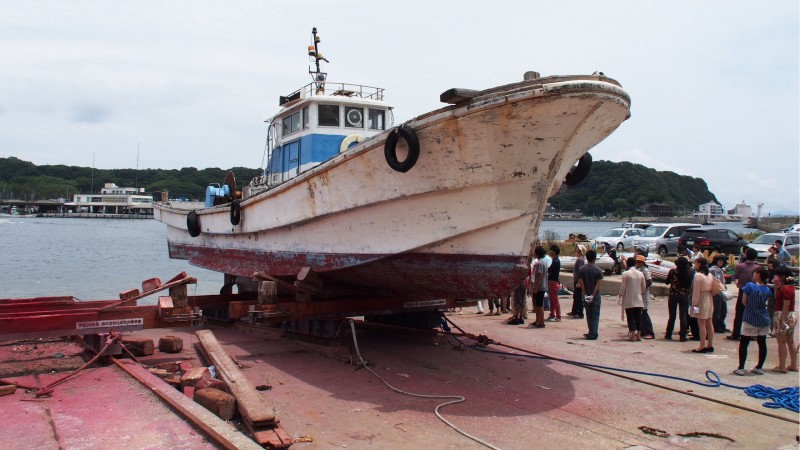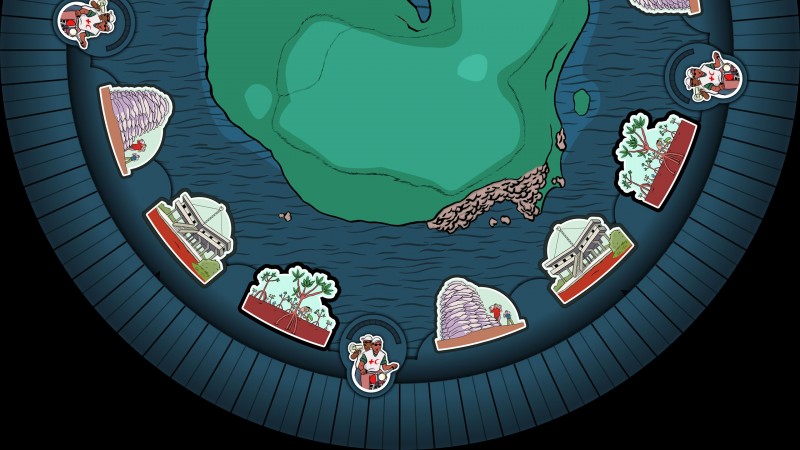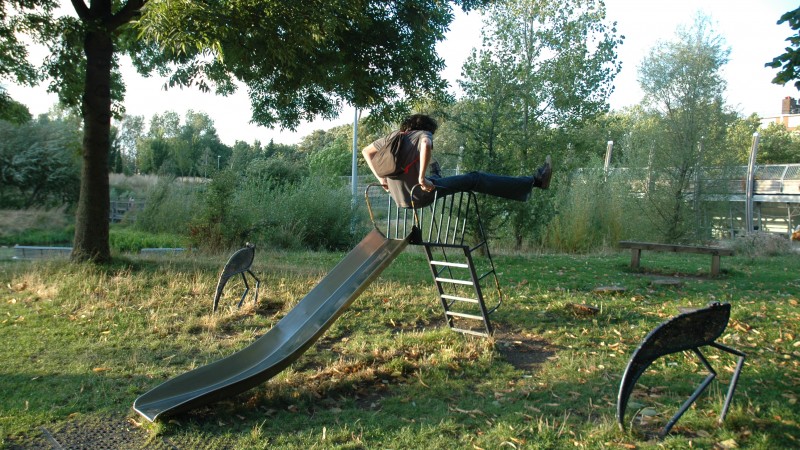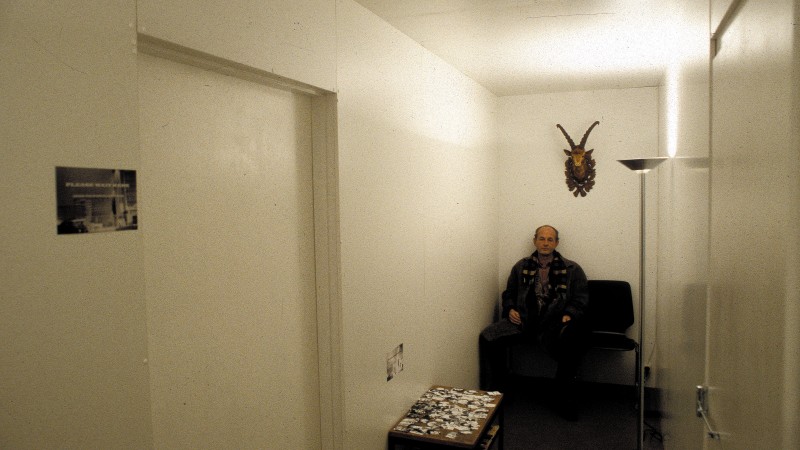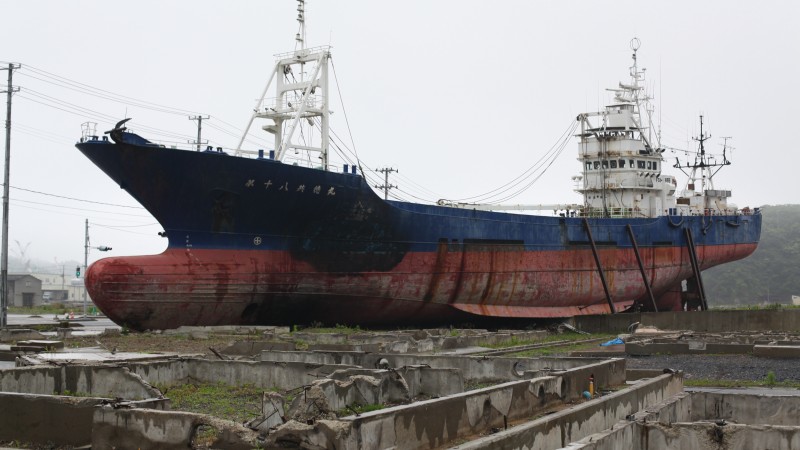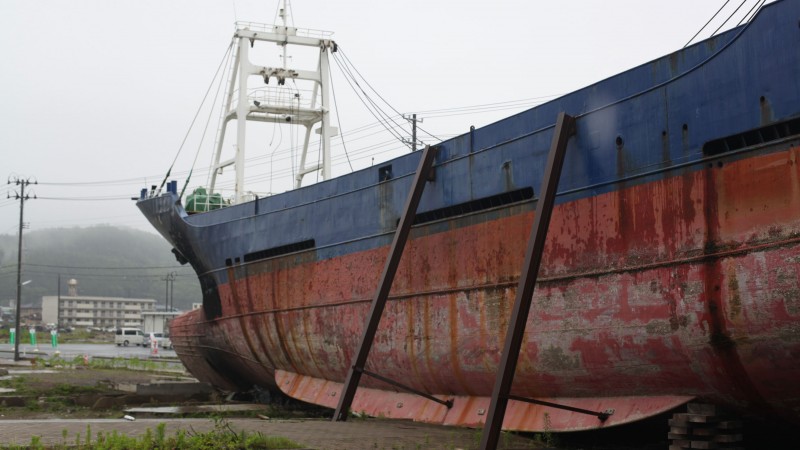In 2012 Matt Adams travelled to Sendai to interview fishermen who were involved in the Tsunami in 2011. This was a research trip for The Thing I’ll Be Doing For The Rest Of My Life, a commission by the Aichi Triennale in Nagoya, Japan in 2013.
We are interested in what if feels like at the moment of no return, when all that we know including the ground that we stand on and can see for miles in all directions, moves beyond control and recognition. In 2013 Ju Row Farr from Blast Theory travelled to Nagoya to make this work with the help of an incredible team of people and volunteers.
A crowd of volunteers drag a trawler out of the water and onto the land, dragging the trawler by ropes in the fierce heat of a Nagoya summer. The effort is enormous and the work is hard. A fisherman donated the trawler to the project from Toyohama, it used to belong to his dad and he was totally behind the whole process. He later tells Ju that he is an ambassador for fishing as a way of life and goes into schools talking about his profession and how good fish is for you in your diet.

Later a crane lifts the boat onto a lorry at the Nagoya Port and it is driven into the city centre at midnight. Crowds gather to watch along the route and as the lorry arrives at the park, the boats’ final resting place.
People bring food and drink, make videos, photos, hang out, worry and look on, as the 30 tonne craft is lifted once more into its final position. They stay from midnight until 5 in the morning and then at 9 in the morning they come back again, except there are more of them. This time we all push the trawler into its final position in the park near Wakamiya Odori Crossing, where it sits for the next three months.
A young boy climbs onto the boat, carrying a megaphone and on the prow of the boat he tells a story to the people who pushed. It is a story about a time when he was in San Francisco when a disaster struck; it was about him in the disaster in Mexico. He tells us about cafes spontaneously formed by survivors. He tells us how ordinary men and women respond with heroism and solidarity. He tells us how order was created by the people who got there before the rescue services and the press.
As if time travelling backwards and forwards through disasters over the last hundred years, he puts the boat and the volunteers efforts into context.
The boy completes his story and climbs down from the deck.
During every part of the journey, Ju broadcasts what was happening via social media. The blog from the project can be read in full here.
Online audiences follow the progress of the boat, listen to the stories that the boy tells, share photos of the journey and send messages of support using the hashtag #thethingillbedoing
The whole process was filmed, which was shown throughout the Aichi Triennale, on tablets which members of the public walk with as they looked at the trawler under the flyover in the park.
The title of the work comes from an interview made by Matt with a fisherman during a research trip to the Sendai area. Mr Nakazato’s village of Funikoshi was extensively damaged in the tsunami of 2011. Speaking about his efforts to rebuild the village and especially the fishing community he said, “This is the thing I’ll be doing for the rest of my life”.
